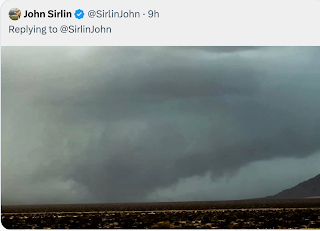Review of "Warnings"
The Bulletin of the American Meteorological Society reviews books, so Kim sent them two advance copies of Warnings in hopes they would choose to review it.
A few days later, I received this email from the executive director of the AMS, Keith Seitter:
Mike,
A couple of pre-publication review copies of your book arrived yesterday. We will be using one to get a review and I took the other one to read on my daily train ride as I find time. I'm only a few chapters in but thoroughly enjoying it so far.
Keith
I wrote back telling Keith how pleased I was that he had a favorable first impression of the book. Two days later, this email arrived:
Mike,
I took a vacation day today so I could stay home and finish your book. Just put it down. Just terrific!
Keith
Wow! I was humbled and thrilled to learn he enjoyed it. So, I asked if he would write a short review that we could use and he graciously agreed:
Review
"Warnings: The True Story of How Science Tamed the Weather"
This book chronicles the remarkable advances that have occurred in meteorology over the past 50 years -- not through dry statistics but through very personal stories. Those advances, which have been the result of both increased scientific understanding and incredible technological advances, are largely underappreciated by the public. While the author, Mike Smith, has researched the events in the book carefully, he was also there in the midst of most of them as they happened and so this is a very personal story, as well.
The book discusses the virtual elimination of airline crashes due to wind shear and the thousands of lives saved by hurricane warnings. Its primary focus is on severe storms in the Midwestern U.S., but the issues raised about the evolution of forecasting the weather, and the impact those forecasts have on the people and commerce, are much more universal. The book especially highlights the role of the private sector in serving the weather forecasting needs of the nation, but clearly acknowledges the very important role of National Weather Service (and other government agencies) and the academic research community. Some may feel that Smith was overly critical of some early policy decisions of government agencies, but he also gives praise and credit where due to government forecasters and for the observational systems deployed by the government that support all weather forecasting operations.
The narrative throughout the book is engaging and compelling, and I found it very hard to put down after reading just the first few pages. In several places, Smith does an especially good job of capturing the mindset of the forecaster, particularly related to severe weather situations. The drive to get the forecast and severe weather warnings perfect, the excitement of seeing the power of nature unfold in the form of severe thunderstorms and tornadoes, the exhilaration of seeing that you were right and that the severe weather is occurring just as you forecast -- but simultaneously wishing you were wrong because you know the result will leave devastation and heartache in its wake.
This book is not just for hard-core weather enthusiasts or those who work in weather-related fields (though they will love it). Anyone who has ever watched a stormy sky on warm afternoon or felt moved by the images on the news following the Greensburg tornado or Hurricane Katrina (both of which are covered in this book) will get pulled into the narrative of this book.
--------------------------------------------------------
Keith L. Seitter, CCM
Executive Director
American Meteorological Society
45 Beacon Street
Boston, MA 02108




Comments
Post a Comment